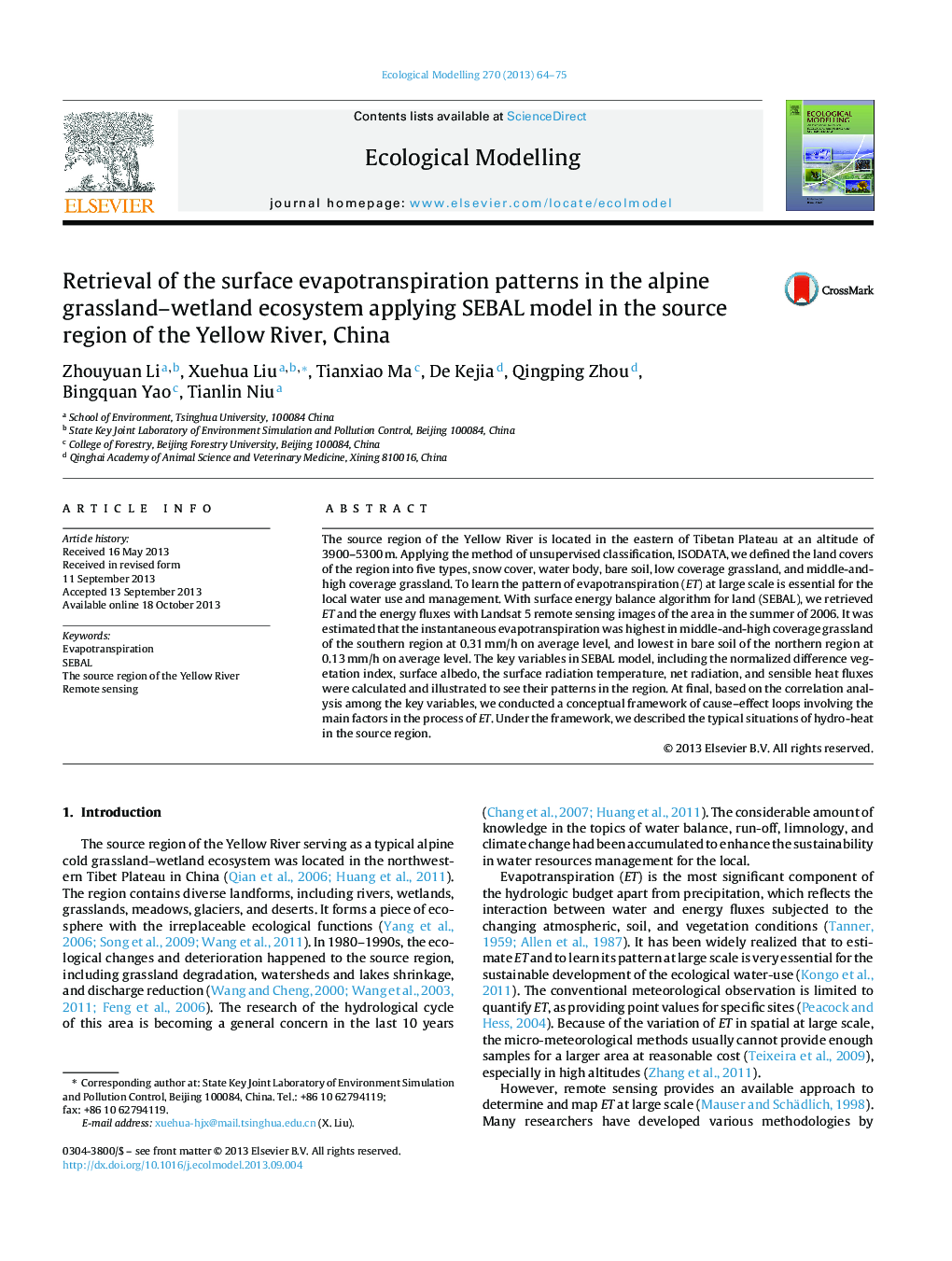| کد مقاله | کد نشریه | سال انتشار | مقاله انگلیسی | نسخه تمام متن |
|---|---|---|---|---|
| 4376014 | 1617476 | 2013 | 12 صفحه PDF | دانلود رایگان |

• Remote sensing model SEBAL was applied to show the patterns of evapotranspiration in the source region of the Yellow River, China, as alpine grassland-wetland ecosystems.
• Based on the numberical relationships in the correlation analysis of the key variables, the cause–effect chain was conducted to describe the typical situations of the hydro-heat in the area.
• The approaches of validation for SEBAL model in the recent decade were summarized to reflect a proper solution to compare the retrieved with the observed values.
The source region of the Yellow River is located in the eastern of Tibetan Plateau at an altitude of 3900–5300 m. Applying the method of unsupervised classification, ISODATA, we defined the land covers of the region into five types, snow cover, water body, bare soil, low coverage grassland, and middle-and-high coverage grassland. To learn the pattern of evapotranspiration (ET) at large scale is essential for the local water use and management. With surface energy balance algorithm for land (SEBAL), we retrieved ET and the energy fluxes with Landsat 5 remote sensing images of the area in the summer of 2006. It was estimated that the instantaneous evapotranspiration was highest in middle-and-high coverage grassland of the southern region at 0.31 mm/h on average level, and lowest in bare soil of the northern region at 0.13 mm/h on average level. The key variables in SEBAL model, including the normalized difference vegetation index, surface albedo, the surface radiation temperature, net radiation, and sensible heat fluxes were calculated and illustrated to see their patterns in the region. At final, based on the correlation analysis among the key variables, we conducted a conceptual framework of cause–effect loops involving the main factors in the process of ET. Under the framework, we described the typical situations of hydro-heat in the source region.
Figure optionsDownload as PowerPoint slide
Journal: Ecological Modelling - Volume 270, December 2013, Pages 64–75